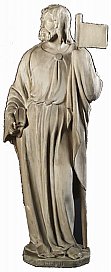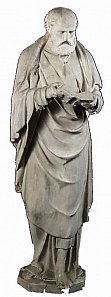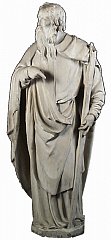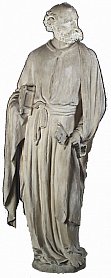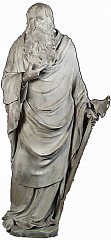Apostle Figures from the grave of St. Sebaldus
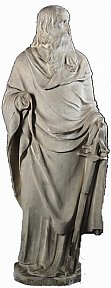
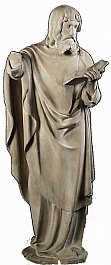
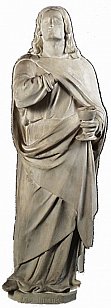
In the middle of 15th century the municipal council of Nuremberg decided to order a tomb for the remains of St. Sebald, who had been heald in high esteem by the townspeople. His remains were put into a reliquary in 1397, and in 1488 it was decided to construct a protetive case for this reliquary - a tomb. Peter Vischer sen. presented a first draft, which was never executed. A second inquiry followed and the tomb took five years to construct. The monument was finally completed in 1519 after a long interruption, and an admonition to hurry up by the minicipal council. Clearly, changes arise during a manufacturing process that takes 31 years, and it is not clear who was responsbile for certain aspects of the tomb’s structure and design. The monument shows a completed tomb in 1519 featuring an inner part consisting of a base, a substructure, the reliquary and an outer part consisting of eight columns and a canopy. Twelve apostle figures are placed in eye-level of the viewer and in close proximity to the reliquary. The figures represented are: Peter (key and book), Andrew (diagonal cross and book), Jacob sen. (pilgrim’s staff with shell and book), John (chalice with poisonous snake), Philip (stick in the form of a cross), Batholomew (knife), Thomas (lance and book), Matthew (halberd), Jacob jr. (fuller’s stick and book), Judas Thaddaeus (club and book), Simon (saw and book) and Paul (two swords). The figures aren’t separated from each other or gathered into groups, but seem to be arranged coincidentally. Some, for example Paul and Philip, are seen engaged in lively dispute. Thomas is shown turning to his neighbour without communicating with him. Jacob senior is shown to be oblivious to the world around him. Today’s arrangment has been contructed from photographs rather than the original, but the general impression is that the figures have been arranged in a living way. The long period between the first draft of the tomb and its completion is apparent since characteristics of Late Gothic Art and Renaissance Art exist side by side.
